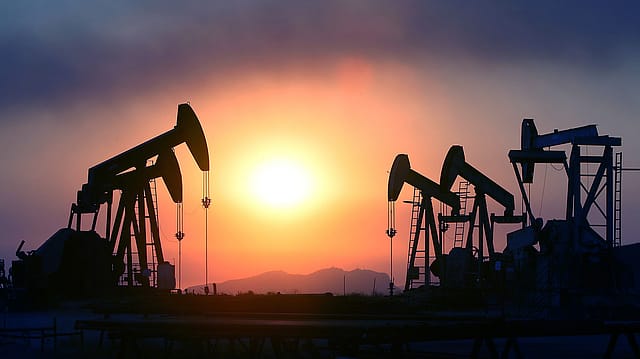Russia-Ukraine war: Feb trade data grim alert for India as crude spikes
ADVERTISEMENT

Russia-Ukraine conflict has a sharp and swift impact on India's economy through rising crude and commodity prices. Testimony of the severe impact is the ballooning trade deficit for February. India's February trade deficit widened to $21.2 billion from $17.9 billion in January, primarily driven by a sharp rise in oil imports that rose nearly 43% month-on-month.
Though Russia is a marginal trade partner as it accounts for just 1.4% of India's import and 0.9% of exports, elevated oil and commodity prices for a sustained period may dent consumer sentiment and demand, says a UTI International report dated March 08.
Negative economic consequences for India on account of the Russia-Ukraine war show that even small trade partners can have a wider impact on India's economy, if they hold a key to commodities that India primarily imports. On the back of a high population, even India's base demand for commodities is huge.
For Indian policymakers, serious challenges emerge from the severe impact of the Russia-Ukraine war on current account deficit (CAD). Various research reports expect India's CAD to rise by 0.3% of GDP if global crude prices spike by 10%. Broader cost push pressures are also likely on other key imports like fertilisers, coal, edible oil, natural gas and metals.
December 2025
The annual Fortune 500 India list, the definitive compendium of corporate performance, is out. This year, the cumulative revenue of the Fortune 500 India companies has breached $2 trillion for the first time. Plus, find out which are the Best B-schools in India.
February trade data offers a grim reminder of Russia-Ukraine pressures in the pipeline, says a Nomura Research report dated March 3. Rising prices of oil and broader commodities, especially aggravated by the ongoing Russia-Ukraine conflict, are likely to further add to the import bill in the coming months, the report adds.
Nomura also sees marginal downside risks to exports due to weaker demand from Russia and potentially from global spill-over effects. The report estimated that the current account deficit of India may widen to 2.6% of GDP in FY 23 from 1.7% in FY22, assuming oil prices average $86.6 per barrel. Given the lag between spot oil prices and the signing of new oil contracts, we should see the full effect of the current rise in oil prices in the April/May trade data, the report adds.
Import growth of commodities on account of high import of fertilisers (644% year-on-year) and coal (117% YoY) reflects India's direct and indirect reliance on Russia for fertilisers and commodities.
In February 2022, Moody's upgraded India's growth forecast for the year to 9.5% but if oil averages at $100 per barrel for the rest of the year, growth may well be 8.5%, the UTI International research report says.
Spiking commodities prices will fuel inflation. Market participants believe that gold imports in the country may move up as a hedge against inflation. Between 2013 and 2021, gold import hovered between 7.5% and 8.5% of India's GDP.
On the export front, while there are some downside risks due to weaker demand from Russia, the impact should be small, as Russia accounts for only 0.8% of India's total exports. Pharmaceutical products, telecom instruments, iron and steel and marine products comprise the bulk of India's exports to the Commonwealth of Independent States region. However, if the slowdown in Russia's economy spills over more broadly, risks to export demand would increases, Nomura report states.
